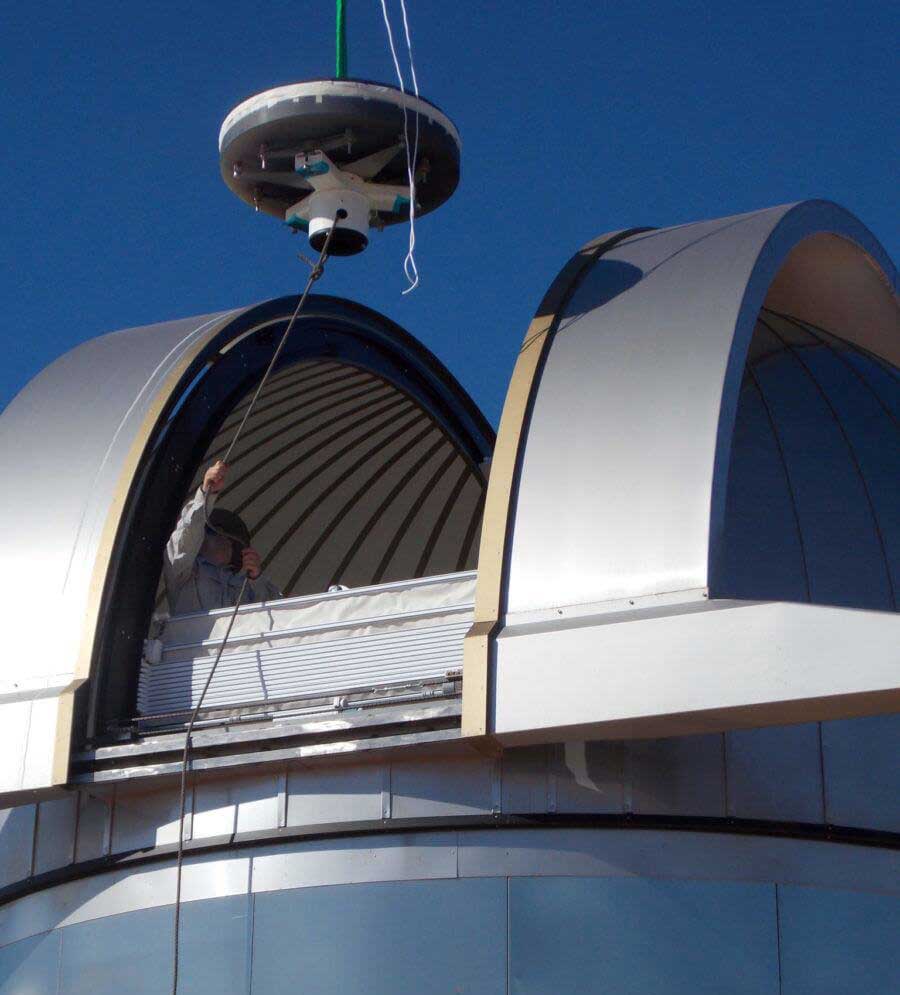
Optical Filter Requirements for LEO Internet Communication
The current importance of optical communication in and for LEO (low Earth orbit) networks (free-space optics, laser inter-satellite links) depends upon the strength of the systems that are mapping and imaging 360 degrees of the satellite, and guiding and powering earth-to-space, and space-to-ground transmissions.
Optical filters ensure signal integrity, performance, and mission success for laser communications terminals in flight, on the ground, and in orbit. We help our customers get the right photons to the right place at the right time.
How Omega Provides You With Optical Filters Ready for Space High Transmission Efficiency
High Transmission Efficiency: Power budgets are tight in space, and signal strength can degrade quickly. A tiny amount of insertion loss of 1.5dB in a filter results in ~30% loss of optical signal, just by passing through that filter. Our engineers know how to minimize insertion loss for long-distance free-space links in our filters and fiber connectors, thereby saving on data transmission rates, required power needs, and signal-to-noise ratio (SNR), as well as enhancing link reliability. Find high confidence and lower loss rates with our optical coatings.
Radiation Resistance and Tolerance to ionizing radiation in LEO (atomic oxygen, UV exposure). We achieve this by using durable coating materials and space-qualified substrates.
Hydrophobic and Oleophobic Properties: Water droplets, dirt, and debris have no place when used in critical communications equipment. Our BBAR coatings incorporate extra protection and droplet-shedding abilities for reduced contamination properties with Omega’s mirrors, lenses, and filters. Our coatings are regularly requested to meet MIL-C-675C durability standards.
Thermal Stability: Performance across wide temperature ranges (–40°C to +85°C or beyond) as satellites may be stored underground without heat or humidity controls. Optical coatings must exhibit stability during the launch sequence to maintain their spectral properties under radical thermal cycling.
Angular Dependence: Filters used for LEO may need to operate under off-axis conditions (±10–30° AOI). This situation creates the issue of maintaining spectral accuracy with angle-tuned optics. Omega’s engineers and coating designers will produce the desired performance result to your needed AOI.
Omega’s Tight Spectral Controls: Allow for the narrow bandwidth requirements needed for wavelength-division multiplexing (WDM), minimizing cross-talk and noise, thereby creating individual channels and enabling efficient signal routing. Interference filters, Fiber Bragg gratings, and arrayed waveguide gratings are typically used. Omega is the only manufacturer of coated fiber tips for instrumentation.
Are You Considering Enhanced Coatings for Deployed Use?
We enhanced IR coating technology with Ithaca’s diamond-like carbon coating chamber, which was developed to up-coat, eliminate pinholes, and offer a robust PE-CVD IR coating for environmental resilience and long operational lifetimes.
How and Where We Coat Optics for LEO Applications
In March 2023, Omega launched a vision to support rapid customization and broad production scaling capabilities, creating a unique collaborative environment that our customers truly appreciate.
Brattleboro, Vermont: The first company to design and coat fluorescence filters, this location continues to deliver custom filters and subassemblies to some of the world’s largest OEMs.
Hopewell Junction: Designing and creating custom IR optics and subassemblies, the Hopewell Junction site develops products for FTIR instruments, military IR windows, night vision lenses, and flat aerospace optics.
Ayers: Efficiency replicated. Design and manufacture of exceptional volumes of ruled and holographic diffraction gratings, reflection and transmission, from the VUV to LWIR.
Ithaca, NY: Omega coats high volumes on large-format glass, metals, ceramics, plastic, and IR substrates.
– Featured Case Study –
Coating a Multi-agency Space Telescope
Omega’s Range of Optical Filters Specifically for Low Orbit
Used to isolate laser communication wavelengths (e.g., 1550 nm, 1064 nm)
High out-of-band blocking (OD > 4 or OD > 6 depending on application)
Edge Filters (Longpass/Shortpass)
Support WDM and spectral channel management
Tailored for your specific cutoff slopes and blocking ranges
Notch Filters (Narrowband Filters)
Notch filters suppress unwanted emission lines or solar background noise and are often combined with bandpass filters in multi-element stacks.
Created to direct a portion of the beam for diagnostics or dual-path routing
Manage laser intensity or protect detectors in high-energy systems
Solar Rejection Filters / Thermal IR Blockers
Prevent sensor saturation and reduce heat load from sunlight
Block IR beyond communication wavelengths to protect optics
Additional Options Available from Omega Optical
Filter Substrate Selection
Our team of engineers understands optical materials and will assist you in finding low CTE materials (fused silica, sapphire) for the best thermal performance.
We know that low weight is excellent for LEO, so lightweight and radiation-tolerant glasses or polymers are available. Our designers want to have that conversation with you to provide the best possible choice that meets your budget, application specifications, and other considerations. We source the majority of our substrates in the USA.
AR Coatings and Surface Treatments
Popular AR coatings minimize surface reflection losses. These can be added as a second coating. Hydrophobic or oleophobic coatings to mitigate contamination in storage, for launch and in space.
Miniaturized Filter Components for CubeSats and SmallSats
Our Ithaca site’s ability to create massive volumes of miniature coated optics means that your project can be up and running quickly. Ask us for an RFQ.
Precision optical filters are essential enablers of high-bandwidth, secure, and efficient LEO communication in today’s world, and demand for this technology is only increasing.
You know the importance of working with optical manufacturers who understand space-specific challenges and can produce filters to exacting tolerances, so go with a proven partner for your next LEO project.
Our highly experienced coating engineers are ready to discuss your questions and concerns about LEO optics and coatings and put them to rest.





